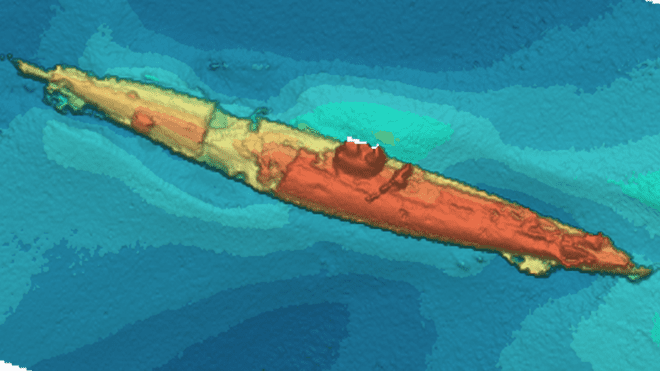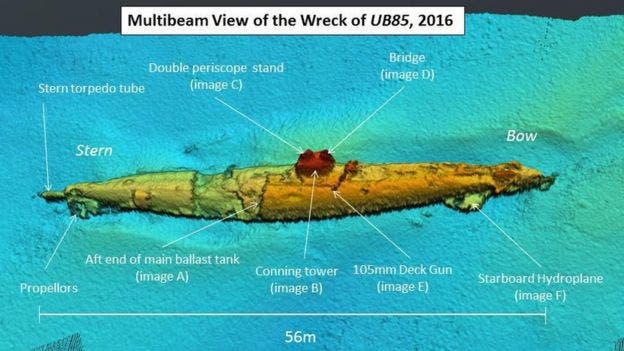The wreck of a German submarine from almost 100 years ago was discovered by Scottish engineers, largely intact.
Legend has it the U-boat was attacked by a “sea monster” and quickly sunk as the entire crew abandoned ship. After they boarded the British HMS Coreopsis, the crew described a “terrible beast,” with captain Krech referring to “large eyes, set in a horny sort of skull… with teeth that could be seen glistening in the moonlight”. He claimed his U-boat was damaged by the monster so that it couldn’t submerge.
But history has it otherwise. Experts believe this boat is the UB-85, a sub sunk by HMS Coreopsis in 1918, which then rescued the Germans. Dr Innes McCartney, a historian and nautical archaeologist who helped identify the wreckage, told the BBC:
“The submarine was caught on the surface at night, recharging its batteries. It saw the patrol ship coming. It attempted to do a crash dive to get away. Once the submarine was under water, it rapidly started flooding from above so they had no option but to blow all the compressed air they had, bring the submarine to the surface at which point all they could do was surrender.”
There are 12 British and German submarines known to have sunk in the area – this was one of the more mysterious ones.
“While I can conclude that this wreck is likely to be one or the other, they would be practically impossible to tell apart, aside from the numbers painted on them in service, now obviously long gone,” McCartney added. “Unless a diver can find a shipyard stamp, we cannot say definitively, but yes, we’re certainly closer to solving the so-called mystery of UB-85 and the reason behind its sinking – whether common mechanical failure or something that is less easily explained.
But some people still believe the mythical explanation. Gary Campbell, the keeper of the Official Sightings Register of the Loch Ness Monster, said it was “entirely feasible” that a large sea creature destroyed the U-boat.
“The area of sea where the attack took place has a history of sea monster sightings – they have ranged from the north coast of Wales to Liverpool bay. What the German captain said could well be true.”











